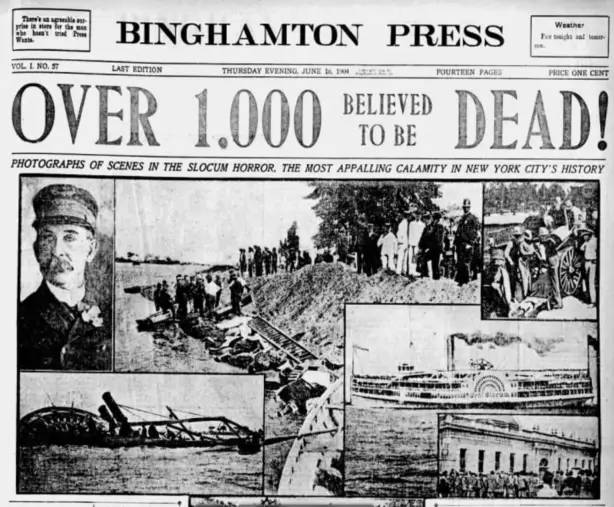The Bronx, Queens and Brooklyn city tour is something unusual because from one minute to the next you move between poverty and wealth, between the most different cultures and architecture. German culture also had a great influence on New York, unfortunately with a sad end.
German Dispensary was a community hospital for the poor and became Lenox Hill Hospital
New York's East Village was once the third largest German-speaking city in the world - only Vienna and Berlin were larger.
New York has always been home to a unique ethnic enclave, and Kleindeutschland, or Little Germany, was literally a German town in the middle of New York that retained its language and customs.
At its peak in the mid-19th century, Little Germany was home to 60,000 Germans and encompassed 400 so-called blocks, from Division Street to 14th Street and from Avenue D to Bowery. It was one of New York's most densely populated neighborhoods, and some estimate that 30% of New York City was made up of German immigrants and their American-born children.
Tompkins Square Park on the Lower East Side was in the heart of the neighborhood and Avenue B was the commercial street known as "German Broadway." The area, especially near Bowery, was filled with huge beer halls, lager shops, theaters and grocery stores. Most were advertised in German signage, and the neighborhood even had its own German newspaper, the New Yorker Staats-Zeitung.
What destroyed “Littel Germany”
Everything changed on June 15, 1904, when little Germany - and many of its inhabitants - were wiped out in the "General Slocum Disaster."
What was supposed to be a wonderful day trip along the East River to Long Island organized by the East Village branch of St. Mark's Lutheran Church for their 17th annual picnic turned into a disaster. The chartered boat (General Slocum) that was supposed to take the guests to Long Island burned out, killing around 1,000 Germans.
Most of the guests on the ship were women and children - and mostly from wealthy families. These families formed the social foundation of Little Germany and the accident had a significant impact on the community. Almost every family lost a member, and the number of suicides rose dramatically after the disaster.
Little Germany never recovered. The once tight-knit enclave slowly disintegrated, and as World War I sparked anti-German sentiment, people distanced themselves from their language, their customs, and even more from each other.
Where the remains of German culture can still be found in New York
All that reminds us of the tragedy today is the Slocum Memorial Fountain in the middle of Tompkins Square Park. It was donated by the Sympathy Society of German Ladies in 1906 and shows a lion's head and two children looking out to sea.
Slocum Memorial Fountain
However, if you know where to look, you can still find remnants of the area in the East Village that was once crowded with Germans.
The Ottendorfer Library is located at 135 Second Avenue and has the words “Free Library and Reading Hall” on its bright red brick facade. Opened in 1884 as New York's first public library, it was a gift from German immigrant Oswald Ottendorfer, editor of the German newspaper, half of the books were in German, the other half in English.
The first public library in New York
The building next door, 137 Second Avenue, was the German Pharmacy - the words "Deutsches Dispensary" still shine on the facade. It was a community hospital that provided medical care to the poor.
Another remnant of the once-thriving neighborhood is at 12 St. Marks Place, where the words "Unity Makes You Strong" and "German-American Rifle Society" are engraved above a door that is now a yoga studio and fitness center.
The famous Germania Bank Building at 190 Bowery also has German roots. Built by a German architect, it was the third location of the German-American Bank, a chain founded by German businessmen.
Little Germany also gave birth to the Germania Life Insurance Company of America, which is now the Guardian Life Insurance Company.
Germania Bank Building
